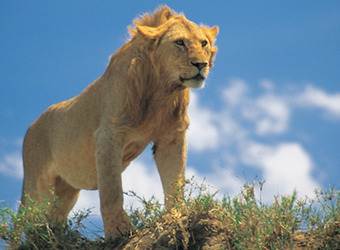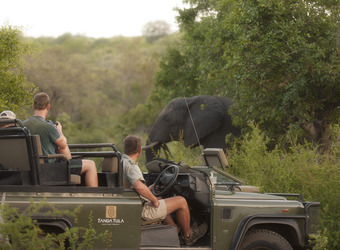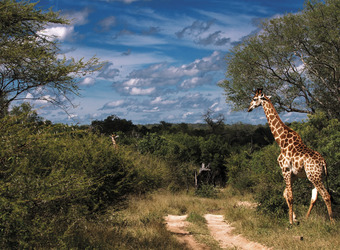Kruger National Park
Click here to be the first to review Kruger National Park
Start Planning Your Custom Safari view larger image
view larger image
World-renowned Kruger National Park in South Africa is a flagship destination for safari-goers, thanks to its dense wildlife populations. Checking off the big cats, major mammals and a host of bird species is a given in this diverse ecosystem. A number of private game reserves dot the greater park area providing exclusive access to the treasures here and allowing a variety of modes to experience them, from wildlife drives in open vehicles to intimate safari walks.
 view image gallery
view image gallery
The Safari Experience
The Greater Kruger Park, a joint venture between Kruger National Park and the Associated Private Nature Reserves, is one of the largest reserves in Africa, covering more than 7,500 square miles and featuring four varied landscapes. Our selection of camps allows guests to get off the main track and view both diurnal and nocturnal animals on day and night wildlife drives, guided bush walks and off-road forays in 4x4 safari trucks. There are also many community projects, often run by the camps themselves, that afford guests authentic cultural encounters while supporting the local people. In certain areas in the northern Limpopo sector of the park, visitors can see ancient San Bushmen rock art, offering clues into the deep human history that is pervasive here as well. Half-day adventures broaden the possibilities with endangered animal rehabilitation centers, elephant safaris, scenic helicopter flights, balloon safaris and voluntourism opportunities.
 view image gallery
view image gallery
Wildlife
Kruger boasts more species of large mammal—147 in all—than any other game reserve in Africa. The famous “Big Five” are here—lion, leopard, elephant, buffalo and rhinoceros, both black and white—and the park is home to several packs of endangered wild dog. Elephant have a stronghold in Kruger with nearly 12,000 resident within the park and surrounding unfenced reserves, allowing uninhibited wildlife movement within the ecosystem. Kruger harbors 517 resident and migratory bird species, including specialties such as the martial eagle, saddle-billed stork, kori bustard, ground hornbill, Pel’s fishing owl and the lappet-faced vulture. Southern giraffe, Burchell’s zebra, Cape buffalo, hippo, hyena and a variety of antelope, especially impala and kudu, are frequent sightings. In Kruger one tends to see small- to medium-sized groupings of animals quite frequently and in close proximity.
 view image gallery
view image gallery
How to Include Kruger in Your Safari Itinerary
Recommended Number of Nights
Nature Travelers: 3 nights, combined with Sabi Sand
Photographers: 2-3 nights, combined with at least 3 nights in Sabi Sand
Families: 2-3 nights, combined with Sabi Sand or Southern Kalahari
Active Travelers: 2-3 nights, combined with the Southern Kalahari and Cape Town
Other Regions to Include
The rugged landscape of the greater Kruger Park complements the various biomes and lush coastal areas of Zululand, which is an excellent option for families, photographers, active travelers and nature enthusiasts, with such a great variety of activities and landscapes. Sabi Sand, with its famed private game reserves, is an effortless combination with the Kruger Park, as they are neighbors, but varied enough for a complementary experience. With a direct flight to Cape Town, this is a brilliant addition for travelers of varied interests, making possible easy extensions to the Cape Winelands or Cape Coast areas for beautiful flora and fauna. Adding Victoria Falls and even the Victoria Falls in Botswana makes for a very well-rounded safari.
